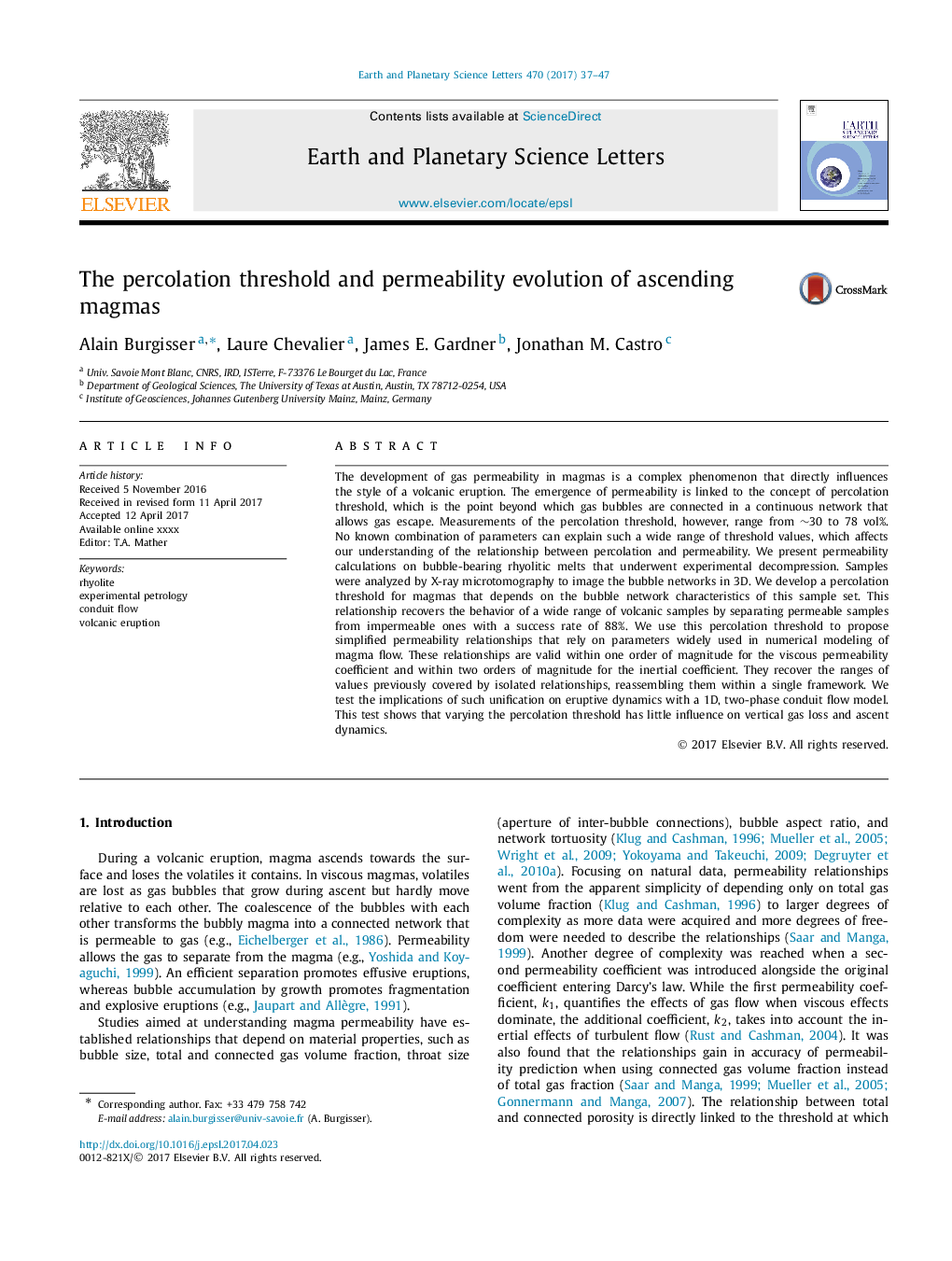| Article ID | Journal | Published Year | Pages | File Type |
|---|---|---|---|---|
| 5779618 | Earth and Planetary Science Letters | 2017 | 11 Pages |
Abstract
The development of gas permeability in magmas is a complex phenomenon that directly influences the style of a volcanic eruption. The emergence of permeability is linked to the concept of percolation threshold, which is the point beyond which gas bubbles are connected in a continuous network that allows gas escape. Measurements of the percolation threshold, however, range from â¼30 to 78 vol%. No known combination of parameters can explain such a wide range of threshold values, which affects our understanding of the relationship between percolation and permeability. We present permeability calculations on bubble-bearing rhyolitic melts that underwent experimental decompression. Samples were analyzed by X-ray microtomography to image the bubble networks in 3D. We develop a percolation threshold for magmas that depends on the bubble network characteristics of this sample set. This relationship recovers the behavior of a wide range of volcanic samples by separating permeable samples from impermeable ones with a success rate of 88%. We use this percolation threshold to propose simplified permeability relationships that rely on parameters widely used in numerical modeling of magma flow. These relationships are valid within one order of magnitude for the viscous permeability coefficient and within two orders of magnitude for the inertial coefficient. They recover the ranges of values previously covered by isolated relationships, reassembling them within a single framework. We test the implications of such unification on eruptive dynamics with a 1D, two-phase conduit flow model. This test shows that varying the percolation threshold has little influence on vertical gas loss and ascent dynamics.
Related Topics
Physical Sciences and Engineering
Earth and Planetary Sciences
Earth and Planetary Sciences (General)
Authors
Alain Burgisser, Laure Chevalier, James E. Gardner, Jonathan M. Castro,
